#empress nara
Text






𝐆𝐮𝐳𝐡𝐮𝐚𝐧𝐠 𝐀𝐩𝐩𝐫𝐞𝐜𝐢𝐚𝐭𝐢𝐨𝐧 𝐌𝐨𝐧𝐭𝐡:
𝐖𝐞𝐞𝐤 2: 𝐐𝐮𝐞𝐞𝐧𝐬/𝐄𝐦𝐩𝐫𝐞𝐬𝐬𝐞𝐬
𝐃𝐚𝐲 11: 𝐔𝐥𝐚 𝐍𝐚𝐫𝐚 𝐑𝐮𝐲𝐢, 𝐄𝐦𝐩𝐫𝐞𝐬𝐬 𝐍𝐚𝐫𝐚
#ula nara ruyi#empress nara#ruyi's royal love in the palace#legend of ruyi#guzhuang appreciation month:week 2
88 notes
·
View notes
Text
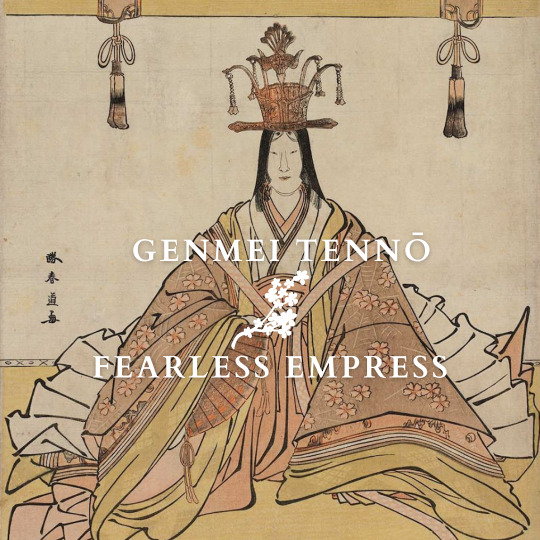
Genmei (661-721) was Japan's fourth empress regnant. She was Empress Jitō's half-sister and her match in terms of ambition and political skills. Her rule was characterized by a development of culture and innovations.
Ruling after her son
Like Jitō (645-703), Genmei was the daughter of Emperor Tenji but was born from a different mother. Jitō was both her half-sister and mother-in-law since Genmei had married the empress’ son, Prince Kusakabe (662-689). She had a son with him, Emperor Monmu (683-707).
Kusakabe died early and never reigned, which led to Jitō's enthronement. The empress was then succeeded by her grandson Monmu. The latter’s reign was short. In his last will, he called for his mother to succeed him in accordance with the “immutable law” of her father Tenji. Genmei accepted.
Steadfast and ambitious
Genmei was made from the same mold as her half-sister. She proved to be a fearless sovereign, undeterred by military crises.
She pursued Jitō's policies, strengthening the central administration and keeping the power in imperial hands. Among her decisions were the proscription of runaway peasants and the restriction of private ownership of mountain and field properties by the nobility and Buddhist temples.
Another of her achievements was transferring the capital at Heijō-kyō (Nara) in 710, turning it into an unprecedented cultural and political center. Her rule saw many innovations. Among them were the first attempt to replace the barter system with the Wadō copper coins, new techniques for making brocade twills and dyeing and the settlement of experimental dairy farmers.
A protector of culture
Genmei sponsored many cultural projects. The first was the Kojiki, written in 712 it told Japan’s history from mythological origins to the current rulers. In its preface, the editor Ō no Yasumaro praised the empress:
“Her Imperial Majesty…illumines the univers…Ruling in the Purple Pavillion, her virtue extends to the limit of the horses’ hoof-prints…It must be saif that her fame is greater than that of Emperor Yü and her virtue surpasses that of Emperor Tang (legendary emperors of China)”.
In 713, she ordered the local governments to collect local legends and oral traditions as well as information about the soil, weather, products and geological and zoological features. Those local gazetteers (Fudoki) were an invaluable source of Japan’s ancient tradition.
Several of Genmei’s poems are included in the Man'yōshū anthology, including a reply by one of the court ladies.
Listen to the sounds of the warriors' elbow-guards;
Our captain must be ranging the shields to drill the troops.
– Genmei Tennō
Reply:
Be not concerned, O my Sovereign;
Am I not here,
I, whom the ancestral gods endowed with life,
Next of kin to yourself
– Minabe-hime
From mother to daughter
Genmei abdicated in 715 and passed the throne to her daughter, empress Genshō (680-748) instead of her sickly grandson prince Obito. This was an unprecedented situation, making the Nara period the pinnacle of female monarchy in Japan.
Genmei would oversee state affairs until she died in 721. Before her death, she shaved her head and became a nun, becoming the first Japanese monarch to take Buddhist vows and establishing a long tradition.
Feel free to check out my Ko-Fi if you like what I do! Your support would be greatly appreciated.
Further reading
Shillony Ben-Ami, Enigma of the Emperors Sacred Subservience in Japanese History
Tsurumi Patricia E., “Japan’s early female emperors”
Aoki Michiko Y., "Jitō Tennō, the female sovereign",in: Mulhern Chieko Irie (ed.), Heroic with grace legendary women of Japan
#history#women in history#women's history#japan#japanese history#empress genmei#japanese empresses#historical figures#historyedit#herstory#nara#japanese art#japanese prints
147 notes
·
View notes
Text
happy valentine's day from my sapphic trifecta to yours ❤️



#crier x ayla#ayla#lady crier#crier's war#crierayla#iron heart#the priory of the orange tree#tpotot#sabran berethnet#eadaz uq nara#ead duryan#ead x sabran#sabranead#the jasmine throne#the oleander sword#priya x malini#priyamalini#elder priya#empress malini#wlw#lesbian
456 notes
·
View notes
Text


Period dramas dresses tournament: Orange dresses Round 2- Group B: Ulanara Yixiu, Legend of Zhen Huan (full dress in first gif of this gifset) vs Jodhaa Bai, Jodhaa Akbar (gifset)
Propaganda for Yixiu's dress (written by a submitter):
I think it seems kinda peachy? But it goes so well with her dianzi hair ornaments, and it's one of her signature looks throughout the show. I'm fairly certain it's a changyi? anyway it's what springs to mind when I think of her.

#period drama dresses tournament#tournament poll#tumblr tournament#polls#fashion poll#ulanara yixiu#ula nara yixiu#empresses in the palace#legend of zhen huan#jodhaa akbar 2008#jodhaa akbar#jodhaa bai#orange r2
37 notes
·
View notes
Text

"Portrait of Empress Kōmyō" (光明皇后像) by Kobori Tomoto (小堀鞆音), 1920's, illustrating the scene in which the Empress (701-760) administers a medicinal bath to a leper (actually a divine bodhisattva in disguise) according to her vow at the temple bathhouse she established.
"Retrato de la emperatriz Kōmyō" (光明皇后像) de Kobori Tomoto (小堀鞆音), años 20, que ilustra la escena en la que la emperatriz (701-760) administra un baño medicinal a un leproso (en realidad un bodhisattva divino disfrazado) según su voto en la casa de baños del templo que ella estableció
Hanging scroll, ink and colors on silk from the collection of Hokkeji Temple (法華寺) in Nara
Image from "Amamonzeki: A Hidden Heritage: Treasures of the Japanese Imperial Convents" published by the Sankei Shimbun, 2009, page 52
#japanese art#arte japonés#小堀鞆音#kobori tomoto#光明皇后#komyo kogo#empress komyo#奈良市#nara#法華寺#hokkeji#crazyfoxarchives
43 notes
·
View notes
Text

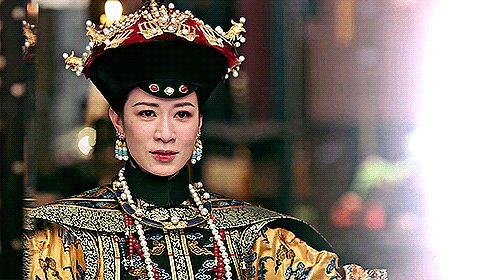

Empress Xiaoxianchun - Empress Nara - Empress Xiaoyichun
#If I am annoying enough#smart people will watch this wonderful drama?#Fuca rongyin#Haifa-nara shushen#Wei yingluo#Story of yanxi palace#*mgifs#In the role of Empress I'll forever love haifa-nara shushen#She did so much wrongs to get there. Questionable queen <3#While doing the Empress fuca's gif I was crying :-/
29 notes
·
View notes
Photo

The Empress. Art by Nara Lesser, from Neurotic Owl’s Faerytale Tarot.
For the Empress, I wanted to do a Selkie, even though the truth is that Selkie tales (and swan maiden tales, and really any ‘man traps magical maiden into marriage’ tales) are TERRIBLE. But the creatures at the root of those stories are delightful. Who doesn’t want to be able to turn into a seal?
The general gist if you’re unfamiliar is young man sees beautiful girl walking along shore with wet hems and wet footprints, no matter how far she walks. He realizes at some point that she’s a Selkie; sometimes that’s before they’re married, sometimes it’s after. Either way, he steals her sealskin, which traps her on land in human form. Marriage goes on, the dude sucks, and at some point after they have had a child together he either yells at or hits her for a third time and she retrieves her skin and disappears with the baby, off to live happy seal life again. Mercedes Lackey has a nice twist on it in her Elemental Masters books, where the Selkie boys need to intermarry with humans to keep their people going but post-industrialization it’s not so easy to turn up on the beach and marry a girl, so a helpful magician finds willing brides who are perfectly delighted to have handsome husbands who can support them comfortably, are great in bed, and fuck off with the kids to the sea regularly while they get a nice break. Seriously sign me up, I’m in.
But ok. My Selkie has her skin safely over her shoulder, and she’s out in the sea, not staring longingly through a window at it. She’s both part of nature and apart from it, she’s fertility and transformation, she’s mysterious but open. She’s the mistress of her own powers. If she takes a human husband, it’ll be on her terms. Also she’s fat, why the fuck did I ever draw a seal woman skinny? (I’ll take internalized fatphobia and self-loathing for $5000.)
31 notes
·
View notes
Photo
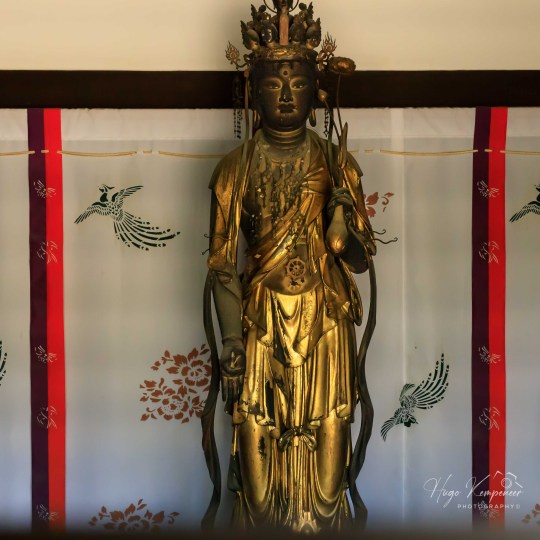
Several scenes of the temple grounds of Shin-Yakushi-ji in Nara, Japan.
#Buddhism#Empress Kōmyō#Japan#Kamakura period#Nara#Shin-Yakushi-ji#Shin-Yakushiji#Twelve Divine Generals#Yakushi Nyorai#travel#光明皇后#十二神将#新薬師寺#薬師如来#鎌倉時代
29 notes
·
View notes
Text
Hongli aka Qianlong and Ruyi!Yongzheng
In Ruyi's Royal Love, it is mentioned that in the early episode that he once watched Emperor Kangxi drawing bamboos with red ink while Yongzheng stated he is jealous towards his own son due to he got the privilage to bonding with Emperor Kangxi 🤔
But I thought in Empresses in the Palace, Kangxi dislike Qianlong due to his birth mom who was a low rank maid and had a fight with Yongzheng due to this matter 🤔
Or maybe that scene is a shout out to IRL!Qianlong who is loved by Kangxi and Yongzheng's promotion as an emperor is due to Qianlong (he wanted his best royal grandson to become an emperor) 😂😂😂
#ruyi's royal love in the palace#legend of ruyi#empresses in the palace#just random ramblings#ruyi's royal love always have this kind of shout out to IRL#another one is Mei taunting off Hui's age#since IRL!Ruyi aka Step Empress Nara is way younger than IRL!Hui aka Imperial Noble Consort Huixian
5 notes
·
View notes
Photo

Empress Dowager Cixi (29 November 1835 – 15 November 1908), of the Manchu Yehe Nara clan, was a Chinese noblewoman, concubine and later regent who effectively controlled the Chinese government in the late Qing dynasty for 47 years, from 1861 until her death in 1908. Selected as a concubine of the Xianfeng Emperor in her adolescence, she gave birth to a son, Zaichun, in 1856. After the Xianfeng Emperor's death in 1861, the young boy became the Tongzhi Emperor, and she assumed the role of co-empress dowager, alongside the Emperor's widow, Empress Dowager Ci'an. Cixi ousted a group of regents appointed by the late emperor and assumed the regency along with Ci'an, who later died. Cixi then consolidated control over the dynasty when she installed her nephew as the Guangxu Emperor at the death of her son, the Tongzhi Emperor, in 1875. This was contrary to the traditional rules of succession of the Qing dynasty that had ruled China since 1644.
14 notes
·
View notes
Text
My favourite K-drama female leads


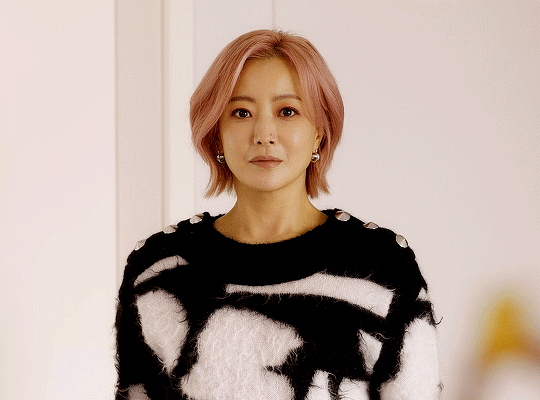
9 notes
·
View notes
Text

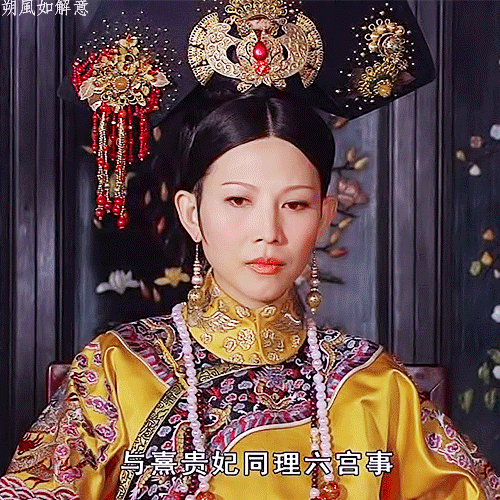

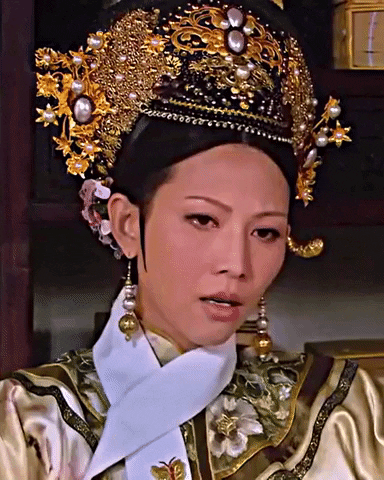


𝐆𝐮𝐳𝐡𝐮𝐚𝐧𝐠 𝐀𝐩𝐩𝐫𝐞𝐜𝐢𝐚𝐭𝐢𝐨𝐧 𝐌𝐨𝐧𝐭𝐡:
𝐖𝐞𝐞𝐤 2: 𝐐𝐮𝐞𝐞𝐧𝐬/𝐄𝐦𝐩𝐫𝐞𝐬𝐬𝐞𝐬
𝐃𝐚𝐲 13: 𝐔𝐥𝐚 𝐍𝐚𝐫𝐚 𝐘𝐢𝐱𝐢𝐮, 𝐄𝐦𝐩𝐫𝐞𝐬𝐬 𝐗𝐢𝐚𝐨𝐣𝐢𝐧𝐠𝐱𝐢𝐚𝐧
#ula nara yixiu#empress xiaojingxian#empresses in the palace#legend of zhen huan#guzhuang appreciation month:week 2
31 notes
·
View notes
Note
Are there any other things that you feel like passionately info dumping about this evening?
The Step Empress, or Empress Nara, was the second empress consort of the Qianlong Emperor.
There is some debate as to her surname, as some sources have it as Ulanara and others have it as Hoifanara. ‘Nara’ could simply refer to a region also so it’s a bit tricky. Anyway she was a Manchu noblewoman and married into the house of the Qianlong Emperor( The yongzheng emperor’s fourth son, hongli), then Prince Bao, as his secondary consort. When Prince Bao ascended the thrown she was given the title of ‘Consort Xian’.
Now the Qianlong Emperor really loved his first wife, Empress Fucha. Like he wrote poems for her years after her death about how much he missed her. When she died, he was loathe to appoint a new Empress but his mother (another fav of mine) had already decided that Lady Nara would take the position.
Despite giving birth to three of his children and being highly favored by both his mother and the Emperor himself, Empress Nara would quickly lose that favor by cutting her hair.
Generally speaking, cutting your hair was a HUGE cultural taboo in China. Manchu customs at the time dictated that they could only cut their hair when they were in deep mourning. Her cutting her hair was seen as a curse on the Emperor or the Empress Dowager.
Although her title was never officially removed, she quickly lost her authority and the Emperor decreased her provisions significantly.
When she died in 1768, the Emperor ordered that her funeral arrangements be that of an Imperial Noble Consort rather than an Empress, however they were scaled down even more so. She was even buried next to Imperial Noble Consort Chunhui rather than being entombed near the emperor’s future resting place
16 notes
·
View notes
Photo

“The downfall of the Step Empress Nara is one of the biggest royal mysteries and it would be so interesting if there is official record. The most common theory is that she had a massive fight with Emperor Qianlong and cut her hair in the process, a major taboo in Manchu culture. Whatever the fight was about, nobody knew but that must be something important because the emperor demoted her and even in her death, she was not given the funeral treatment worthy of an empress. The emperor literally hated her guts. Too bad that we will never know why.” - Submitted by Anonymous
16 notes
·
View notes
Text


Period dramas dresses tournament: Orange dresses Round 1- Group B: Ulanara Yixiu, Legend of Zhen Huan (full dress in first gif of this gifset) vs Catherine of Russia, The great (gifset)
Propaganda for Yixiu's dress (written by a submitter):
I think it seems kinda peachy? But it goes so well with her dianzi hair ornaments, and it's one of her signature looks throughout the show. I'm fairly certain it's a changyi? anyway it's what springs to mind when I think of her.
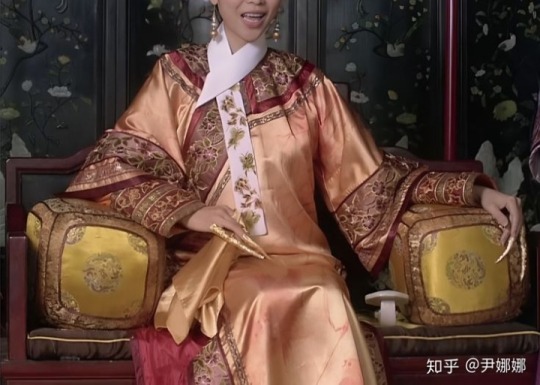
#period drama dresses tournament#tournament poll#tumblr tournament#polls#fashion poll#ulanara yixiu#legend of zhen huan#empresses in the palace#catherine of russia#catherine ii#catherine the great#the great#orange r1#ula nara yixiu
10 notes
·
View notes
Photo

A sculpted image of the semi-legendary reigning Empress Jingū Kōgō (神功皇后) dating to the early 9th century, originally enshrined as the mother of the likewise semi-legendary emperor believed to have been an earthly incarnation of the deity Hachiman (八幡神) at Yasumigaoka Hachimangū Shrine (休ヶ岡八幡宮), the protective shrine for the sacred grounds of Yakushiji Temple (薬師寺) in Nara, though nowadays on loan to the Nara National Museum for care and preservation
Image from “日本の国宝005奈良/薬師寺 (週刊朝日百科)” [National Treasures of Japan #5: Yakushiji (Weekly Asahi Encyclopedia)], published by Asahi Shimbun, 1997
#japanese art#buddhist art#japanese religion#japanese history#神功皇后#jingu kogo#empress jingu#奈良市#nara#薬師寺#yakushiji#休ヶ岡八幡宮#yasumigaoka hachimangu#crazyfoxarchives
13 notes
·
View notes